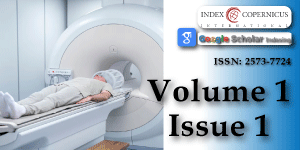Using Mathematical Procedure to Compute the Attenuation Coefficient in Spectrometry Field
Main Article Content
Abstract
In gamma-ray spectrometry, the analysis of the environmental radioactivity samples (soil, sediment and ash of a living organism) needs to know the linear attenuation coefficient of the sample matrix. This coefficient is required to calculate the self-absorption correction factor through the sample bulk. In addition, these parameters are very important because the unidentified samples can be different in the composition and density from the reference liquid sources which are usually used for efficiency calibration in the radioactive monitoring process. The present work is essentially concerned to introduce a mathematical method to calculate the linear attenuation coefficient without using any collimator. This method was based mainly on the calculations of the effective solid angle subtended by the source-to-the detector configurations, the efficiency transfer technique and the average path lengths through the samples itself. The method can be used as a tool for the calculation of the linear attenuation coefficient of unidentified materials with good facility to use it in the calibration process of γ-ray detectors, particularly in the study of soil samples. The results are compared with the data from NIST-XCOM to show how much the results are in close agreement and to give the validity of the approach.
Article Details
Copyright (c) 2017 Elsafi M, et al.

This work is licensed under a Creative Commons Attribution 4.0 International License.
Knoll GF. Radiation Detection and Measurement. Third edition. (Wiley, 2000)
Abbas MI, Selim YS, Bassiouni M. HPGe detector photopeak efficiency calculation including self-absorption and coincidence corrections for cylindrical sources using compact analytical expressions. Radiat Phys and Chem. 2001; 61: 429-431. Ref.: https://goo.gl/uNMCQ6
Hernandez F, El-Daoushy F. Nucl Instrum Methods. Phys Res. A Accel Spectrom Detect Assoc. Equip. 2002; 484: 625-641.
Robu E, Giovani C. Rom. Rep Phys. 2009; 61: 395-300.
Berger MJ, Hubbell JH, Seltzer SM, et al. NIST, PML, Radiation and Biomolecular Physics Division. 2010
Jalali M, Mohammadi A. Gamma ray attenuation coefficient measurement for neutron-absorbent materials. Radiat Phys and Chem. 2008; 77: 523-527. Ref.: https://goo.gl/UsgM1t
Midgley SM. Measurements of the X-ray linear attenuation coefficient for low atomic number materials at energies 32-66 and Full-size image (<1 K). Radiat Phys and Chem. 2005; 72: 525-535. Ref.: https://goo.gl/RCN6Ow
Rettschlag M, Berndt R, Mortreau P. Nucl Instrum Methods Phys Res A: Accel Spectrom Detect Assoc Equip. 2007; 581: 765-771. Ref.: https://goo.gl/h6GDal
Seven S, Karahan IH, Bakkaloglu OF. The measurement of total mass attenuation coefficients of CoCuNi alloys. J Quant Spectrosc Radiat Transf. 2004; 83: 237-242. Ref.: https://goo.gl/CJtmfS
Badawi MS. Accurate calculation of well-type detector geometrical efficiency using sources with different shapes and geometries. Journal of Instrumentation. 2015; 10. Ref.: https://goo.gl/q0BuFQ
Abbas MI. Direct mathematical method for calculating full-energy peak efficiency and coincidence corrections of HPGe detectors for extended sources. Nucl Instrum Meth. 2007; 256: 554-557. Ref.: https://goo.gl/jKwFlE
Abbas MI. A new analytical method to calibrate cylindrical phoswich and LaBr3(Ce) scintillation detectors. Nucl Instrum Meth. 2010; 621: 413-418. Ref.: https://goo.gl/AxlCuG
Thabet AA, Dlabac AD, Jovanović SI, Badawi Mohamed S, Mihaljevic Nikola N, et al. Nuclear Technology & Radiation Protection. 2015; 30: 35-46. Ref.: https://goo.gl/VSnZSI
Badawia MS, Abd-Elzaherb M, Abouzeid A Thabetc, Ahmed M. El-khatib. An empirical formula to calculate the full energy peak efficiency of scintillation detectors. Applied Radiation and Isotopes. 2013; 74: 46-49. Ref.: https://goo.gl/k5DOq6
Badawi MS, Ruskov I, Gouda MM, El-Khatib AM, Alotiby MF, et al. A numerical approach to calculate the full-energy peak efficiency of HPGe well-type detectors using the effective solid angle ratio. Journal of Instrumentation. 2014; 9: Ref.: https://goo.gl/kuuoYF
El-Khatib AM, Badawi MS, Thabet AA, Jovanovic SI, Gouda MM, et al. Well-type NaI(Tl) detector efficiency using analytical technique and ANGLE 4 software based on radioactive point sources located out the well cavity. Chinese Journal of Physics. 2016; 54: 338-346. Ref.: https://goo.gl/XVXm3R
Badawi MS. A numerical simulation method for calculation of linear attenuation coefficients of unidentified sample materials in routine gamma ray spectrometry. Nuclear Technology and Radiation Protection. 2015; 30: 249-259. Ref.: https://goo.gl/BKJ6JL





